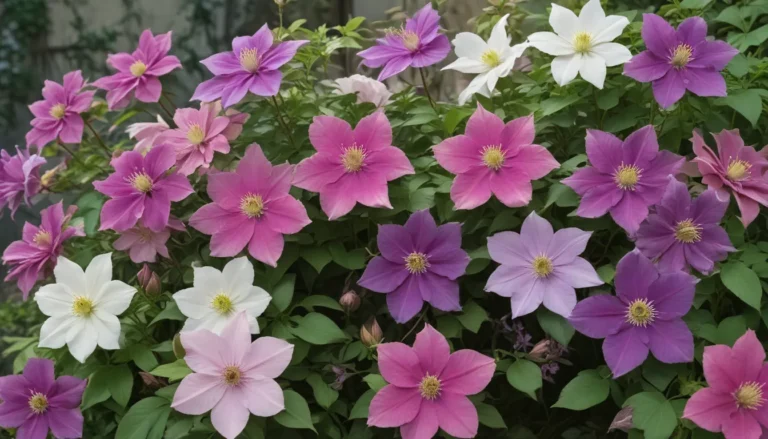Enhancing Landscape Security with Defensive Plants

Remember the good old days when plants served as the first line of defense to protect homes and property from unwanted intruders? Well, those days are not gone, as ornamental and defensive plants can still act as a “biological razor wire” to enhance your landscape security.
So, how can you use plants strategically to deter intruders while maintaining an attractive look for your landscape? Let’s explore some of the best defensive plants that can serve as effective barriers to protect your home.
Choosing the Right Defensive Plants for Home Security
When selecting plants for your landscape, there are several factors to consider to ensure they provide the desired security without compromising aesthetics. Here are some key points to keep in mind:
- Growing Zone: Ensure that the plants are suitable for your growing zone to thrive and provide optimal security.
- Mature Heights: Consider the mature height of the plants to avoid blocking views or escape routes.
- Invasion Concerns: Check for invasive species in your area to avoid planting species that may become problematic.
- Escape Routes: Plan plantings to avoid obstructing windows, doors, or other areas that may be needed for emergency escape.
By carefully considering these factors, you can choose the best defensive plants to create an effective barrier around your property.
Effective Use of Defensive Plants in Your Landscape
Now that you’ve selected the right plants, it’s essential to understand how to strategically use them in your landscape to maximize their security benefits. Here are some practical tips on using defensive plants effectively:
Perimeter Planting
- Choose thorny climbing plants or spiky shrubs to create a protective barrier along your property’s perimeter.
- Place larger, spiky species at the back and smaller unwelcoming specimens in front to deter intruders.
Under Windows
- Plant low-growing, spiky plants underneath windows to make access more challenging for potential burglars.
- Avoid blocking views or access to essential maintenance areas when planting near windows.
Climbers, Trees, and Window Boxes
- Trellis climbing plants along the side of your home to deter unwanted visitors from sneaking into upstairs windows.
- Prune trees or climbers that may provide access to balconies or windows.
- Consider using window boxes with spiky plants to further thwart intrusion attempts.
By following these tips and strategically placing defensive plants in your landscape, you can create a formidable barrier to enhance your home security.
Best Defensive Plants for Home Security
Now, let’s dive into some of the best defensive plants that you can use to protect your property while maintaining a beautiful landscape:
- Agave
- Key Features: Spiky slow-growing succulent with dagger-like leaves.
-
Ideal Placement: Underneath windows or inside fences to create a formidable barrier.
-
Barberry
- Key Features: Evergreen shrub with thorny branches and vibrant red foliage.
-
Effective Use: Ideal for creating a spiky hedge or planting in vulnerable corners of your backyard.
-
Barrel Cactus
- Key Features: Rounded cactus with vicious spikes protruding from each rib.
-
Strategic Placement: Perfect for rockeries or under windows to deter intruders.
-
Blackthorn
- Key Features: Deciduous shrub with dense branches and large spikes.
-
Recommended Planting: Create a formidable barrier around your property or prune into a dense hedge.
-
Blackberry
- Key Features: Rough, prickly shrub with tangled branches and sharp prickles.
-
Strategic Planting: Use along fence lines or under windows to provide protection.
-
Bougainvillea
- Key Features: Ornamental vine with colorful bracts and spiky, woody branches.
-
Ideal Use: Plant along walls or fences to deter intruders with its spiky barrier.
-
Californian Fuchsia
- Key Features: Bright red flowers on spiny stems with irresistible appeal to hummingbirds.
-
Strategic Plantings: Use in shady corners or near fences to provide a beautiful and protective display.
-
Chinese Jujube
- Key Features: Small ornamental tree with thorny branches and edible fruit.
-
Multi-purpose Planting: Plant as a hedge or specimen tree for both security and harvest benefits.
-
Cholla Cactus
- Key Features: Hardy desert cactus with spiny stems and detachable thorns.
-
Strategic Plantings: Place in rockeries or along fence lines for an impenetrable natural barrier.
-
Common Holly
- Key Features: Evergreen shrub with spiny leaves and red berries.
- Effective Placement: Ideal for creating a dense and prickly hedge for enhanced security.
By incorporating these defensive plants into your landscape, you can create a natural and effective security barrier while maintaining the beauty of your outdoor space.
Conclusion
Transforming your landscape into a secure and beautiful sanctuary doesn’t have to be a daunting task. By carefully selecting and strategically placing defensive plants, you can enhance your home security while adding a touch of natural beauty to your surroundings.
Remember to consider your growing zone, plant placement, and specific features of each plant to create a harmonious balance between security and aesthetics. With the right combination of defensive plants, you can fortify your property and create a welcoming yet protective outdoor environment for you and your family.





